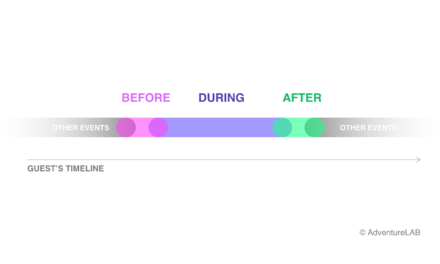Whatever Happened To Retail's Role As The Third Place?
May 20, 2016The retail environment has never been more competitive. Shop closures are regularly in the news and the idea of “well-established” more often means “old,” rather than “enduring.” While hanging on for survival, however, many retailers seem to have forgotten what made them successful in the first place—the experience.
Not experience as in designing how people can easily find the buy button on a website, or another pop-up event marketing stunt, or a long-winded conversation that comes with daring to complain.
No, we are talking about that total experience people have of a brand, which comes from a deep-rooted perception and feeling for it. It is from this internal place that they make their decisions on whether to visit, buy into, or advocate. It is the most powerful connection a brand can hope for, the one that goes beyond words and creates repeated, positive actions. It is something that needs to be nurtured continuously to keep the connection alive and well.
So how can retail brands create this?
Coming Up Next In Experience Marketing
These are my humble predictions of what might be coming up as a means to build connection through experiences. Let me apologise if I seem a bit cynical, but looking at how marketing professionals are still trying to make social media fit into a mass communication mould, it would not surprise me if:
- We will be presented with one-size-fits-all models for experience design marketing that will not take into consideration the multitude of variables there is to contextual, branded store experiences.
- We will be presented with ways of handling the store experience that is basically a part of, or extension of, marketing communications, when they both should be part of a bigger integrated marketing strategy.
- We will be presented with more in-a-box, quick solutions that are applied because of a marketing mindset that has not evolved beyond the eyeball-counting of mass communication campaigns. We need to go deeper than happy or unhappy smiley buttons, and we need to go further than the occasional store event.
But I believe it is more valuable to consider how the retail store can be more than a collection of goods, and how retailer brands can each not just claim, but reclaim, that ground in a unique way. Think of the almost legendary upscale mall experiences of yesteryear, now being recreated by Nespresso. There are some pretty successful retail brands that are not getting caught up in the low price insanity, but are providing something more valuable to customers than cheap offers. Their stores have successfully become Third Places.
The Concept Of The Third Place
In 2002, author and expert on emotional spaces Christian Mikunda brilliantly introduced the concept of the Third Place.
The First Place, the fully styled home, was an invention made early in the 19th century. In the 1960s, the motivating force of an aesthetic working environment was discovered in North America, giving rise to the Second Place.
Mikunda argues that the Third Place arose in the 1980s, as the idea of staging and theatre took hold in stores and restaurants, museums revamped, and experience hotels were built. The homeliness of these places helped people to perceive these semi-public spaces as personal habitats as well, in other words a Third Space. Staged business and retail experiences could now compete with traditional leisure spaces for people’s time and money, providing an advantage and insight that now almost seem forgotten.
Retail stores do not just compete with other competitive stores or the Internet for people’s money. The competition is with anyone and anything that claims people’s time and money.
Key Considerations For Creating Unique Spaces
If you are working in retail, you may need to boost your confidence as a company through radical change—the positive energy of employees is a great way to energise customers. You will need to restrategise your brand experience and develop it into something unique and appealing.
To help you get started, here are some of the key considerations we apply at AdventureLAB when working in retail spaces:
- Why should people visit your store apart from buying stuff?
- What overall headline or theme would you provide to your store experience?
- What feeling do you want people to have from visiting your store?
- What do you want store visitors to talk about after they leave, apart from products and pricing?
- What do your customers dread most in their everyday life, and how can you create a space that represents the exact opposite?
- What do your customers love to do most, and how can you create a space that caters to, or celebrates, that?
- What do you do to make every thing and team member come together to ensure a consistent experience?
- What will you do to keep the store experience fresh and updated, and how will you manage that?
- What can and cannot be replicated from one store or location to the next, because people and places are different?
Your Future Retail Success Story
It may be hard to convince yourself, your team, and company leaders that a drastic change is needed to sustain a retail business today and in the future, but many retailers do not have a choice. The shopping habits of customers have changed forever, and it can be a very risky business not to position your brand accordingly. However, there is a great opportunity at the core of the history of retail. Creating Third Places that motivate people to explore and engage with your brand could very well be one of the future success stories of retail marketing.




